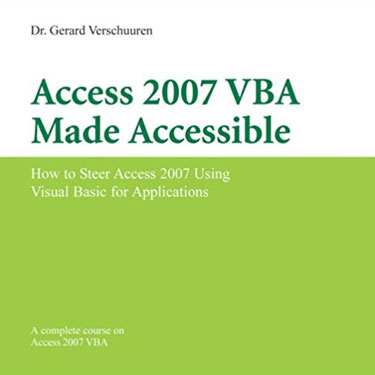
- #VISUAL BASIC FOR APPLICATIONS COURSE FOR MAC OS X#
- #VISUAL BASIC FOR APPLICATIONS COURSE CODE#
- #VISUAL BASIC FOR APPLICATIONS COURSE WINDOWS#
Interaction with the host application uses OLE Automation. VBA is proprietary to Microsoft and, apart from the COM interface, is not an open standard. Compatibility ends with Visual Basic version 6 VBA is incompatible with Visual Basic.
#VISUAL BASIC FOR APPLICATIONS COURSE CODE#
Despite its resemblance to many old BASIC dialects (particularly Microsoft BASIC, from which it is indirectly derived), VBA is incompatible with any of them except Visual Basic, where source code of VBA modules and classes can be directly imported, and which shares the same library and virtual machine. The intermediate code is then executed by a virtual machine (hosted by the host application). xls) independent of the document streams. VBA is also implemented, at least partially, in applications published by companies other than Microsoft, including ArcGIS, AutoCAD, CorelDraw, LibreOffice, Reflection, SolidWorks, WordPerfect, and UNICOM System Architect (which supports VBA 7.1).Ĭode written in VBA is compiled to Microsoft P-Code (pseudo-code), a proprietary intermediate language, which the host applications ( Access, Excel, Word, Outlook, and PowerPoint) store as a separate stream in COM Structured Storage files (e.g.
#VISUAL BASIC FOR APPLICATIONS COURSE FOR MAC OS X#
VBA is built into most Microsoft Office applications, including Office for Mac OS X (except version 2008), and other Microsoft applications, including Microsoft MapPoint and Microsoft Visio.

VBA can use, but not create, ActiveX/COM DLLs, and later versions add support for class modules. For example, VBA can automatically create a Microsoft Word report from Microsoft Excel data that Excel collects automatically from polled sensors. VBA can, however, control one application from another using OLE Automation. However, VBA code normally can only run within a host application, rather than as a standalone program. It can be used to control many aspects of the host application, including manipulating user interface features, such as menus and toolbars, and working with custom user forms or dialog boxes.Īs its name suggests, VBA is closely related to Visual Basic and uses the Visual Basic Runtime Library. It supersedes and expands on the abilities of earlier application-specific macro programming languages such as Word's WordBASIC.
#VISUAL BASIC FOR APPLICATIONS COURSE WINDOWS#
Visual Basic for Applications enables building user-defined functions (UDFs), automating processes and accessing Windows API and other low-level functionality through dynamic-link libraries (DLLs).

Although pre-.NET Visual Basic is no longer supported or updated by Microsoft, the VBA programming language was upgraded in 2010 with the introduction of Visual Basic for Applications 7 in Microsoft Office applications. Visual Basic for Applications ( VBA) is an implementation of Microsoft's Event-Driven Programming language Visual Basic 6.0, which was declared legacy in 2008, and is an associated integrated development environment (IDE).

Static/Dynamic Hybrid, Strong/Weak Hybrid


 0 kommentar(er)
0 kommentar(er)
